Fire Emblem: Three Houses was a favorite of many Fire Emblem fans, including myself, when it came out in 2019. That’s how players were introduced to the intriguing world of Fodlan, rife with mystery, war, and cutthroat politics. With its captivating setting, lovable characters, and several unanswered questions, I’ve been clamoring to revisit Fodlan in Fire Emblem Warriors: Three Hopes.
Fire Emblem Warriors: Three Hopes takes place in an alternate universe where Byleth never becomes a professor at Fodlan’s Officers Academy. Instead, we follow Shez, a purple-haired mercenary who joins the academy as a student. Much like Three Houses, this game has two phases. The first phase covers Shez’s time at the Officers Academy and introduces the players to the other students, as well as the Three Houses that represent the primary powers of Fodlan. Early on, you’ll choose which house to join, which dictates how the story plays out in part two.
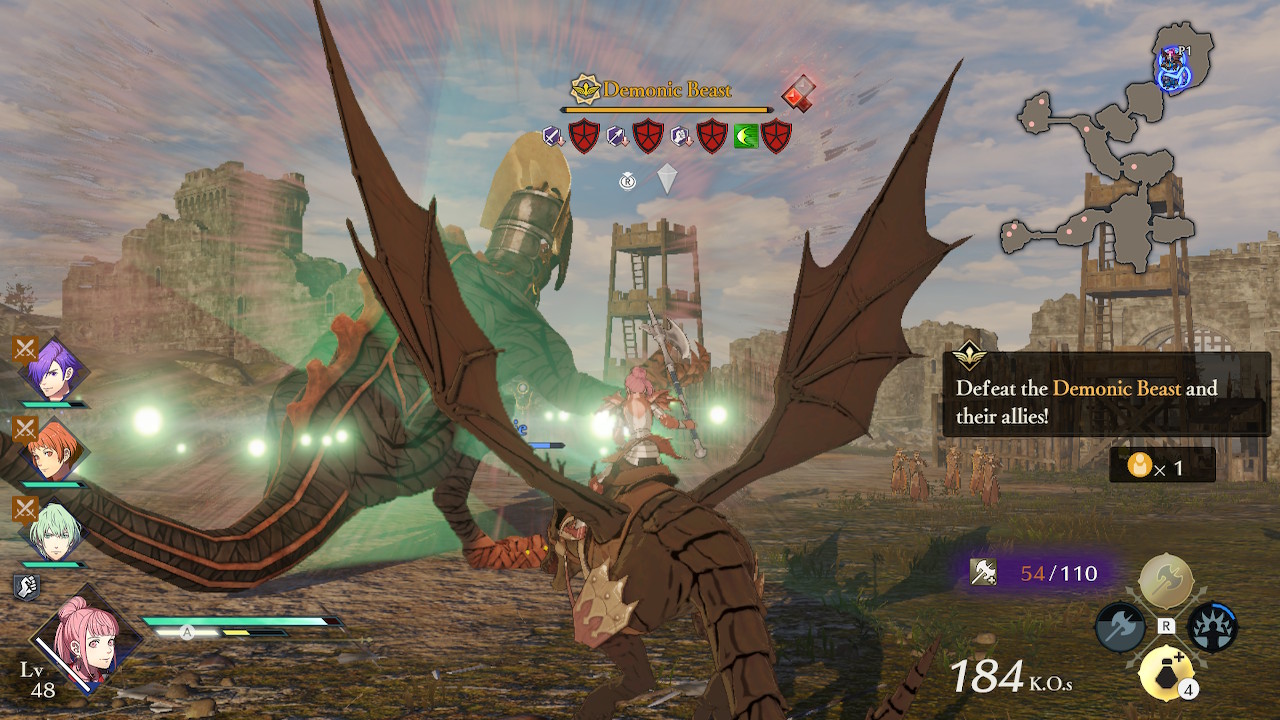
The academy phase in Fire Emblem Warriors: Three Hopes is much shorter than in Three Houses and acts as a tutorial, easing players into the Musou mechanics that may be unfamiliar to fans of traditional Fire Emblem games. Following that, the bulk of the game begins after a brief time skip. Fodlan is at war, and it’s up to Shez to tilt the balance in their chosen faction’s favor.
Fire Emblem fans will feel right at home with the storytelling in Three Hopes. The plot progresses mainly via mostly-voiced scenes between battles, but quips during battle add extra characterization to each unit. The game spends minimal time retreading information covered in Three Houses, including only enough that the essentials of the story will make sense to a new player.
Without context from Three Houses, new players may not fully appreciate the story’s details and lack connections to certain characters. On the flip side, I loved that Fire Emblem Warriors: Three Hopes avoided meandering and got right to telling an engaging story.
Once you begin the story’s meatier second phase, Shez takes a small step back while the leader of your chosen house becomes the story’s focal point. House leaders get many chances to shine in this game, and Shez complements them instead of stealing their spotlight. Your house choice also impacts which characters you have access to for the rest of the game. You start with all the students from your house. As the story goes on, you have the opportunity to recruit some of the units that you fight.
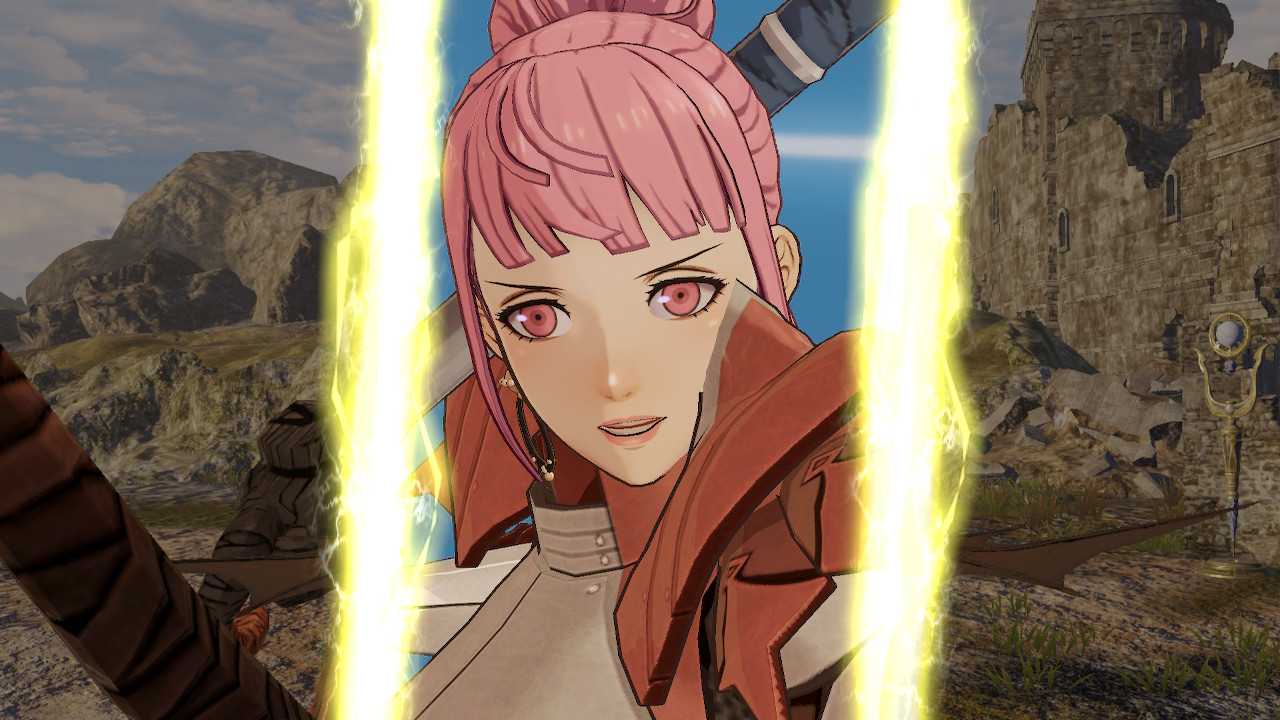
Unlike Three Houses, you can’t recruit everyone in a single playthrough of Fire Emblem Warriors: Three Hopes. You have to fight and kill some of the units from the other houses, and it’s as heartbreaking as it was in Three Houses when you kill one of your favorites. Beyond the three different stories, the unique characters in each route provide a great reason to replay the game.
The support system in Fire Emblem Warriors: Three Hopes will also feel familiar to Fire Emblem fans, though the system is a little pared down in this title. Most units only have one or two conversations with each other instead of the traditional three. Additionally, romance is a less significant feature in this game. While some characters flirt in their support conversations, most explore platonic relationships.
I missed the opportunity to play matchmaker in this game, but the reduced emphasis on romance positively impacts Fire Emblem Warriors: Three Hopes’ support system. A reduced focus on romance allows Three Hopes to explore a greater variety of relationships. Many characters have rivalries, mentorships, or old friendships that are developed via support conversations. These types of relationships exist in other Fire Emblem games, but recent entries limit themselves because opposite-gender support pairings must leave the door open for romance. Three Hopes is free from that limitation.
The support system isn’t without flaws. Some conversations don’t make much sense if done out of order. For example, one of Shez’s support conversations focuses on how recklessly he fights, while another discusses how much less reckless he has become since he joined the military. Little issues like this in support conversations create some dissonance if you happen to do the contradictory supports at the same time or in the same playthrough.
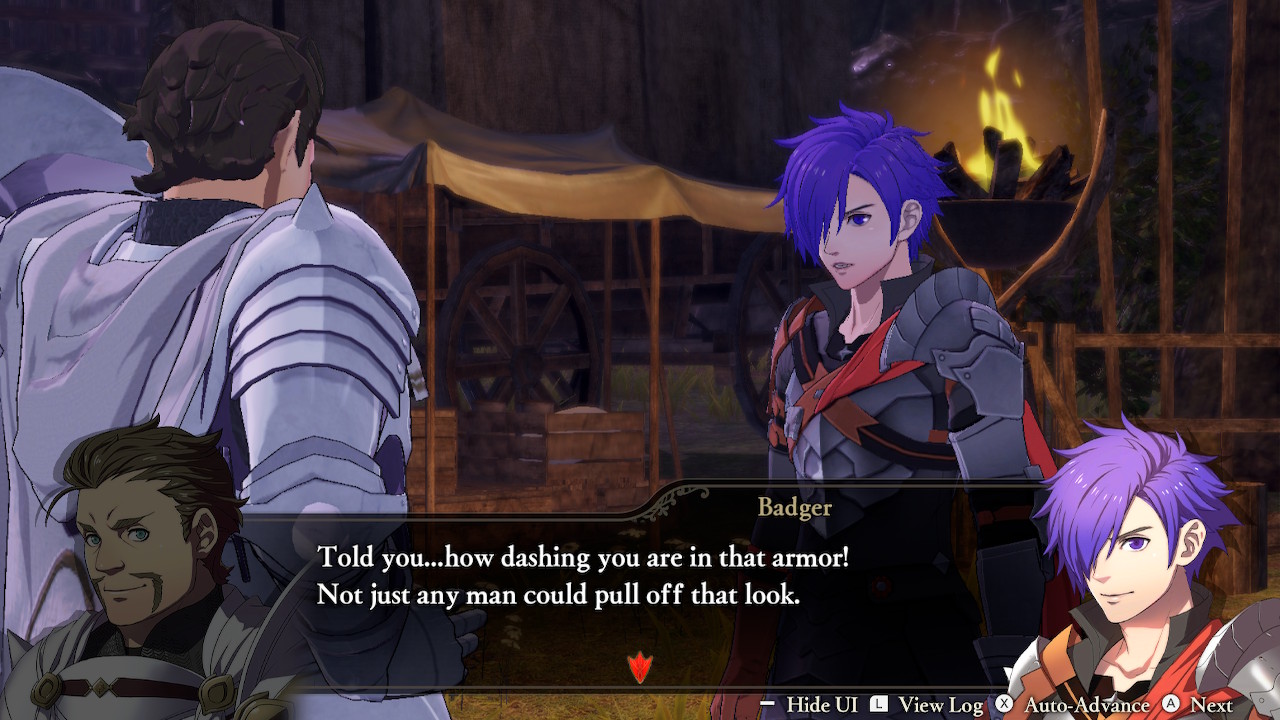
Fodlan’s cast is as charming as ever in Fire Emblem Warriors: Three Hopes, and all of the students make an appearance with new redesigns. Byleth, in particular, benefits from not being the perspective character in Three Hopes. While Byleth was a rarely-voiced character with a small amount of characterization in Three Houses, they are afforded much more dialogue and opportunities to shine as a character in this game.
Shez, our new perspective character, is also a strong addition to the Fire Emblem cannon. Despite being an avatar character that you make decisions for, Shez has a well-defined personality. They come off as a lovable goofball with a socially awkward streak in most of their supports. By the end, Shez quickly became one of my favorite recent Fire Emblem protagonists.
While the characters and story of Fire Emblem Warriors: Three Hopes draw heavily from Three Houses, the gameplay is a complete departure. Unlike the turn-based strategy gameplay the series is known for, Three Hopes is an action-packed Musou game where you control a single character and hack and slash through hordes of enemies. The Musou formula has been iterated dozens of times, and it’s as fun as it’s ever been to cut through thousands of wimpy enemy soldiers. The real juice in Three Hopes’ gameplay is the changes they’ve made to the Musou formula to make it feel like a Fire Emblem game rather than Dynasty Warriors with Fire Emblem characters. My favorite feature in Fire Emblem Warriors: Three Hopes is the class system.
Many classes from Three Houses appear in Three Hopes, and class progression happens in much the same way. Every unit starts in a beginner class, and by gaining experience and class experience, they earn the ability to promote into new classes. There are various class trees to pursue, and most classes are available to every unit. I had a great time trying out units in unusual classes. My favorite was seeing the usually dexterous Shamir running around in massive armor.
The class system is simple enough, but it also fuels the more complex ability system. Each class has abilities associated with them earned via class experience. Units can equip most abilities they’ve unlocked regardless of their current class. As a result, there are good reasons to train in a variety of classes, even if you don’t intend on using all of them. If you have a squishy unit that you’d like to beef up, give them some training sessions in the knight class so they unlock defense-boosting abilities. Your most used units can have dozens of abilities and combat arts to choose from by the end of the game. There’s a lot of depth here for players that love optimizing builds for their units, but players that want to keep it simple won’t have any trouble getting through the game on normal difficulty.
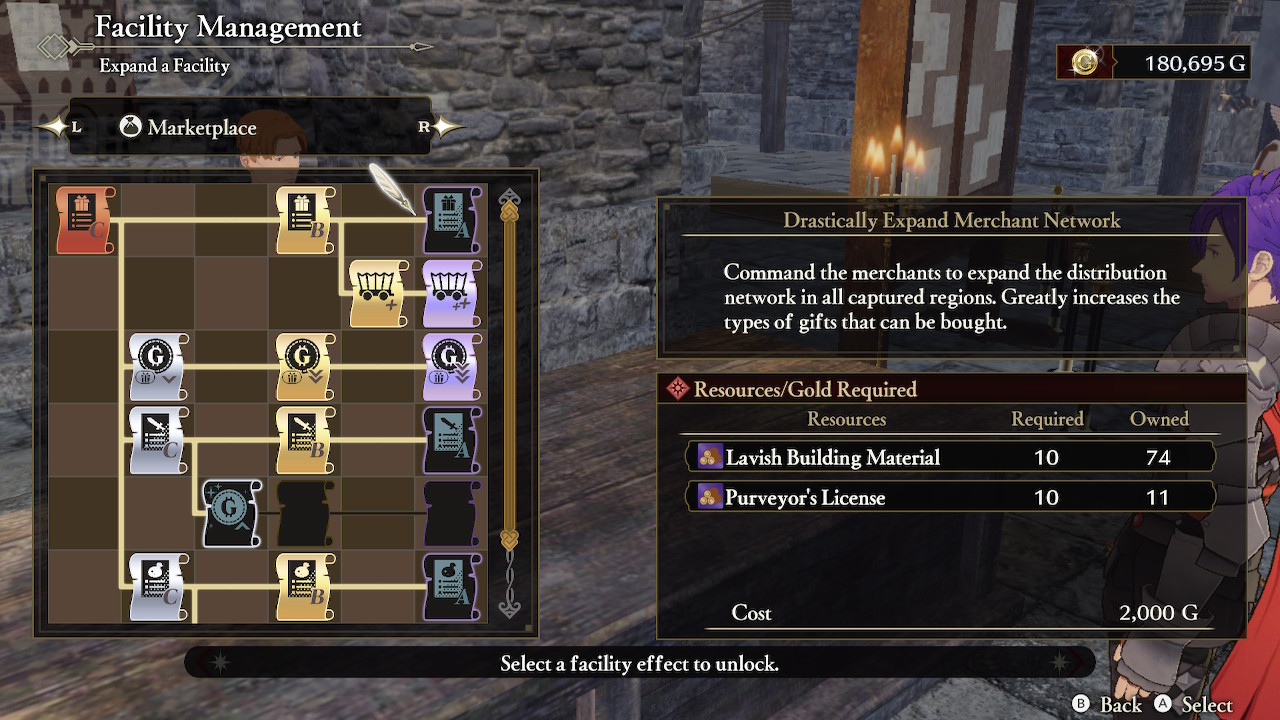
Fire Emblem Warriors: Three Hopes also has a camp feature that’s very reminiscent of the academy in Three Houses. Between every major battle, you have activity points you can spend on cooking, doing chores, or taking field trips with your allies. All of these activities raise the bonds between your units and provide small boosts in the upcoming battles. There are also a variety of shops in the camp that you can upgrade to stock better gear.
The camp feature I used most was the training grounds, which has two essential functions. First, you can use it to give your units some class experience without taking them into battle. Second, you can spend gold to level units up to the highest-level unit you have. Leveling up via the training grounds is essential if you want to use more than a few units. For most battles in the game, you can only bring four units with you, so anyone that isn’t on your primary team will fall behind in experience. Fortunately, the game was generous enough with gold for me to keep between six and ten units battle ready via the training grounds.
Having a variety of units ready is vital because each campaign is long, and the battles can start to become repetitive towards the end. Switching in some new units or trying new classes is a great way to spice things up. Each Fire Emblem Warriors: Three Hopes campaign consists of several chapters, including one large battle and several small battles. The small battles are quick affairs that can be handled in 5-10 minutes, while the large battle takes more like 15-20.
None of the battles in Fire Emblem Warriors: Three Hopes are particularly challenging on normal difficulty, but each has a battle rank, with a reward if you achieve an S-rank. For most battles, a good rank is achieved by finishing battles quickly, killing a certain number of units, and avoiding taking damage. The S-rank rewards are usually good, so it’s worth it to try to get them when you can. Going for S-ranks also adds a little challenge and urgency to the easier maps.
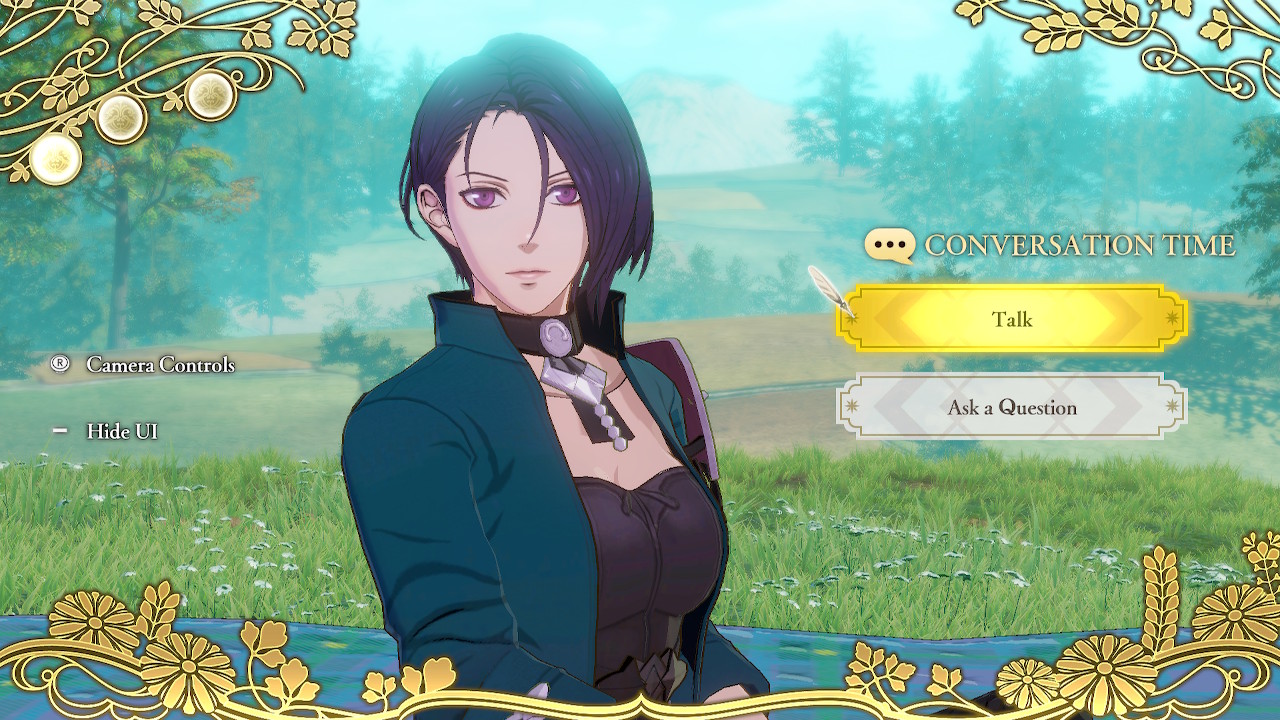
The large battles are the best missions Fire Emblem Warriors: Three Hopes has to offer. They often include multiple objectives that can change on the fly. To succeed, you have to think about how to manage and move your units to accomplish multiple goals quickly or even simultaneously. The bigger battles are always the most plot-relevant missions, while the smaller missions can sometimes feel like filler.
Even in the significant battles, there’s limited variety in the moment-to-moment gameplay of Fire Emblem: Three Hopes, and while I was having a blast for most of my first playthrough, I was starting to burn out a bit by the end. Removing some of the minor battles would have gone a long way in improving the pacing in a game with three routes, each of which can take 15-20 hours to complete. Despite getting a little tired of Three Hopes’ gameplay loop in the end, it worked very well the first time around, and I suspect I’ll be raring to take on my third run-through of the game after a little break.
Ultimately, Three Hopes takes the wonderful world built in Three Houses and delivers a more consistent, satisfying story while effortlessly merging Fire Emblem gameplay elements with Musou gameplay. For fans of the Three Houses, Fire Emblem Warriors: Three Hopes is a must-play. I’d recommend it to everyone else too, but you’ll get more out of it if you start with Fire Emblem: Three Houses.


